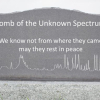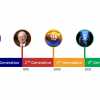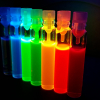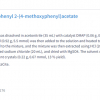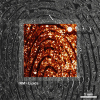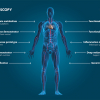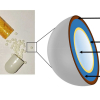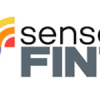Antony N. Davies,a Mohan Cashyapb and John Hollertonc
aSERC, Sustainable Environment Research Centre, Faculty of Computing, Engineering and Science, University of South Wales, UK
bMASS Informatics, Harpenden, UK
cHollerton Scientific Software Consultancy, St Albans, UK
DOI: https://doi.org/10.1255/sew.2022.a25
© 2022 The Authors
Published under a Creative Commons BY-NC-ND licence
Mohan Cashyap mentioned to me recently that an old colleague, John Hollerton, was retiring from a long career at GSK and that we ought to take this opportunity to have a chat with him. Great idea I thought. John is not only a leading industrial analytical scientist, but I know from working with him, Mohan and Ian Michael in the past on the LISMS conference (Linking and Interpreting Spectra through Molecular Structures) that he is also an innovative ideas man with some interesting stories. In fact, our online chat ran well beyond the time we had allocated and was full of insightful observations for industrial colleagues, software and hardware vendors, educators as well as any scientist looking to make career choices at the start or even middle of their careers. We chatted for so long, not only on technological topics but also around people, that we will present the result over two columns to avoid dropping any of the good bits!
Anyway, this will be a slightly different format to the usual articles (and hopefully a lighter read for dark winter nights!).
Introducing John Hollerton
TD: Thanks for agreeing to speak to Spectroscopy Europe/World following your retirement from GSK after so many years. How long did you work within the pharma giant “Glaxo-Welcome-Smith-Kline-Beckman-Beachams-French” and through how many incarnations?
I joined Glaxo in 1980 which was not long after the Ware R&D site opened, just after Allen & Hanburys became Glaxo. I lived in Ware; I had left university and was looking for a temporary job. I basically had no idea what I wanted to do when I started out, that’s for sure.
TD: But over the years you succeeded in becoming one of the top industrial analytical spectroscopists in the UK, but this was not your intention when you started out?
I knew that I liked computers. I knew that I liked analytical chemistry. I also knew that I didn’t want to do synthetic chemistry. So really, I knew what I didn’t want to do, but I didn’t know what I wanted to do. Then having joined Glaxo, I had the opportunity to develop my skills as an analytical chemist and do some computing. I really enjoyed it!
I think I probably changed my job on average every four years. So, had lots of different roles and in my time, I managed all sorts of things from compound registration, physical chemistry, X-ray crystallography, chromatography, mass spectrometry—pretty much the whole gamut of stuff that we that we did over the years.
But fundamentally I was an NMR spectroscopist. That was my primary skill and it was probably the thing that I enjoyed most of all. Once an NMR spectroscopist, probably always an NMR spectroscopist. It keeps your interest. You learn something new every day—and that’s remarkable. Even after 40 odd years, I was still learning stuff in NMR which I think is tremendous. I mean, that’s the sort of thing that really gets my juices flowing.
But I’m not sure I would class myself as being a top industrial analytical spectroscopist!
TD: OK so how would you define yourself?
I don’t know. Just someone who’s tried to make a difference in my field. I’ve probably been vocal, and I quite like presenting so maybe people see me more. A lot of it is about visibility.
TD: There is a phrase which I hate which is “Thought Leader”. But from my interactions with you, limited as they’ve been from both within GSK and from without. You are an ideas person. This is a rare personality trait if I put it that way around. There is a significant number of people who only look to ticking the boxes they are required to tick, and they would be happy doing that. It’s then very difficult to hold a conversation outside of an existing box. You know, it’s often only a limited number of people within some companies that you can hold a conversation with about “Wouldn’t it be great if…”
Yes. I’ve met the same sorts of people. There are lots of people who do their dream job and they do it very, very well, but they don’t tend to look beyond what they do. Maybe one of the things that that’s always driven me is to look at where we ought to be as opposed to where we are today. That’s driven what I’ve done. I’ve always looked at this as “Yeah, but we could do so much better if…”
I do a lot of process thinking. I look at a big process and I try to break it down. What can we change about that big process to make it a better process? It might be more efficient, or it may create more information or more knowledge.
Data is a big driver for me. If we’re doing stuff, why don’t we capture all that we know about what we did? Because even though you might not need it today, it may be really useful tomorrow!
TD: So, coming back to what formed the John Hollerton of today… what were your first instruments?
At university, I had access to a Varian EM360 NMR—that’s 60 MHz, not 360 MHz, because they didn’t exist back then! It was in a really bad state. So, I went to the lecturer who was in charge of it and asked if I could have a go at trying to make it better? So, I read a book about shimming. Flew right into it and spent hours and hours and hours getting it really badly wrong and worse. And then eventually it gets better, and I actually got it working well. That’s probably my first experience getting onto an analytical system and understanding a little bit about the joy that you have when you finally managed to get a system to work correctly.
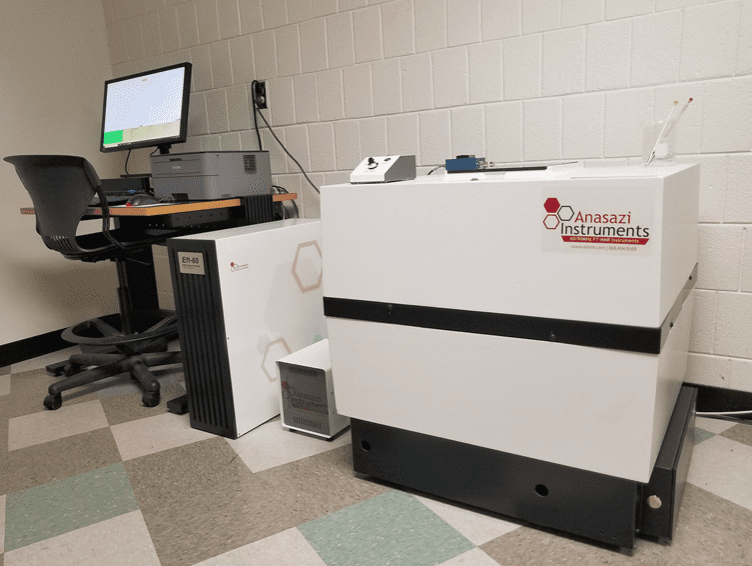
Figure 1. A Varian EM360 which has been upgraded through the Anasazi Instruments “Refresh Program” (www.aiinmr.com/EM-360-NMR-Refresh-Program). Image courtesy Anasazi Instruments
TD: So, where did you go to university?
I went to Royal Holloway, which had a brand-new chemistry department then. It was a big, shiny new building. There was a lot of kit there so I was probably fortunate to have access to things that maybe many other undergraduates in those days wouldn’t have had.
When I joined Glaxo, we had EM390s, the 90 MHz version of the EM360 that I had used, so I felt very comfortable with those, and I was very quickly up to speed. I started out mainly doing vibrational spectroscopy (IR, UV and polarimetry). It was a bit of a production line, pushing out IR spectra because we ran IR on absolutely everything back in those days. The first thing I learned was that UV, as a technique, was often just a stamp collecting exercise. No one did anything with UV data. I successfully lobbied to stop us doing UV unless people had a particular need for it. I think it came to a head when one of the chemists submitted something without a chromophore. I said, just what were you expecting to see? And he said, I was just checking to see there wasn’t a chromophore in it! And it’s like, oh, should I do oxygen NMR to show that there is no oxygen in it?
TD: I think we can see the beginning of a critical thinker prepared to challenge established practice where it doesn’t make sense. Mohan has an interesting question.
MC: If you were to nominate somebody, John, that had the most impact on your career, who would that be and why?
Probably Richard Ernst. And the reason why, because he was the Granddaddy of 2D-NMR and 2D-NMR has been the most amazing development for NMR.
In terms of development of my career, I think my first boss, was an amazing person. He just basically allowed people the space to be innovative and do their stuff. I found him and his enthusiasm very, very infectious. I think he probably did more to push my career and also push me. He told me some years later that he would ask me to do something impossible knowing that I would tell him it was impossible, and I would go away and, about three weeks later, come back suggesting that the outcome could be achieved in a different way! So, I think he knew me very well and I think he played me very well. He was a very important influence on my career.
MC: That’s a really good answer, actually. If you weren’t going to be a spectroscopist and you had your time again, what career would you choose retrospectively and why?
Well, computing is the other area of my career, so I’ve always had a dual role. So, if I wasn’t doing spectroscopy, I would be doing computing, but it would be scientific computing.
In fact, many years ago I was headhunted by a bank in London to go and work for them. At that point I realised that there was no way on earth I wanted to be in finance. That was not my passion.
I like making things and I like making things that people use. I’m always looking for things, even stuff which is on the edge of what my true employment has been. I’ve never been constrained, by “you’re a spectroscopist—do stuff around spectroscopy”.
MC: I know you’ve been very much a supporter of the use of lab IT systems. Could you expand on the areas with which you have worked on, and what do you think have become more successful during your career?
Automation of data analysis, particularly complex data analysis, has been one of the things I spend a lot of time on. Automated structure verification (ASV) has been a big area, and I think I’ve influenced the direction of that for various companies. It’s not there yet and I’m famously quoted as saying that ASV will be there in 3 to 5 years. And I’ve said that every year for the last 20 odd years! One day I’m going to be right, and I think that’s probably the big thing. But actually, just removing manual steps from any processes, trying to automate those processes so that people spend that time using their brains, not their fingers. That’s something I’ve done a lot of.
MC: Lab informatics / electronic lab notebooks have been the Holy Grail for many people, but also mean different things to different people. What does it mean to you?
I think terms like electronic lab notebook (ELN), laboratory information management system (LIMS) or scientific data management system (SDMS) are actually very unhelpful terms because there’s no definition about what they are. Where they start and where they end. I would rather look at things in terms of an overall process and the bits which make up that process. Part of it will be capturing a thought, an intellectual idea about what you want to do. And I think the ELN captures that. Then you want to execute it and once again the ELN should capture what you’ve executed. But does it need to be a notebook as such? Probably not. I think it’s a very outdated term. It’s just there to ease people through that transition from paper to where they need to get, which is electronic capture all the way along the process.
TD: I’ve had to deal with this issue for so many years. A company would come in with totally fixed ideas about what their software will do, often failing to read the brief. When the company’s requirements were explained to them again, they would often respond: “We don’t do it like that. We do it like this.” Well, no. Vendors need to provide something which supports the way that we are required to work. We will not be changing the way our spectroscopy, our analysts or whatever work to fit around your software. It is astonishing how many companies with really good reputations come in, completely fixated on only one way of working.
Yeah, the software shouldn’t design the process. The software should be there to help the process. And everyone’s got slightly different processes. You know, you’ve got the same overall arc, but basically the processes are slightly different. I think ELNs, SDMSs and LIMS, are actually a matter of being able to capture information electronically in a standard form so that it passes right the way through the process from cradle to grave. That’s what the Holy Grail is. Are we there? Absolutely not. We’re still miles away from that, I think, unfortunately. And there’s no reason why we couldn’t be there. It’s just that there’s not been the will or the investment to make it happen.
Anyhow, I think its time for a coffee break before we move into the discussions for part 2!
Thanks for your patience!
References
- R.R. Ernst, “Zurich′s contributions to 50 years development of Bruker”, Angew. Chem. Int. Edit. 49(45), 8310–8315 (2010). https://doi.org/10.1002/anie.201005067
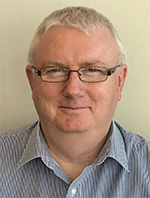
Tony Davies
Tony Davies is a long-standing Spectroscopy Europe column editor and recognised thought leader on standardisation and regulatory compliance with a foot in both industrial and academic camps. He spent most of his working life in Germany and the Netherlands, most recently as Lead Scientist, Strategic Research Group – Measurement and Analytical Science at AkzoNobel/Nouryon Chemicals BV in the Netherlands. A strong advocate of the correct use of Open Innovation. 0000-0002-3119-4202
0000-0002-3119-4202
[email protected]
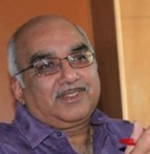
Mohan Cashyap
Mohan started his professional career as a research chemist in the pharmaceutical industry moving into IT at an early stage and personally overseeing many global transformational projects at corporate level. He is a successful serial investor in technology start-ups including in the med-tech arena where his experience in working in heavily regulated environments brings additional insights above his financial and business acumen. He has actively supported standardisation across industry and vendors scientific systems for decades!
[email protected]
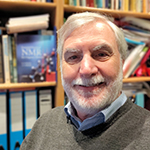
John Hollerton
John Hollerton has worked in pharmaceutical research at GSK for many years as an analytical chemist and informatician. His background is in NMR spectroscopy but has also had a major role in developing informatics solutions to scientific problems. He also has a significant interest in data standards having been a board member of the Allotrope Foundation. He now works as an independent consultant. 0000-0003-1453-9931
0000-0003-1453-9931
[email protected]








